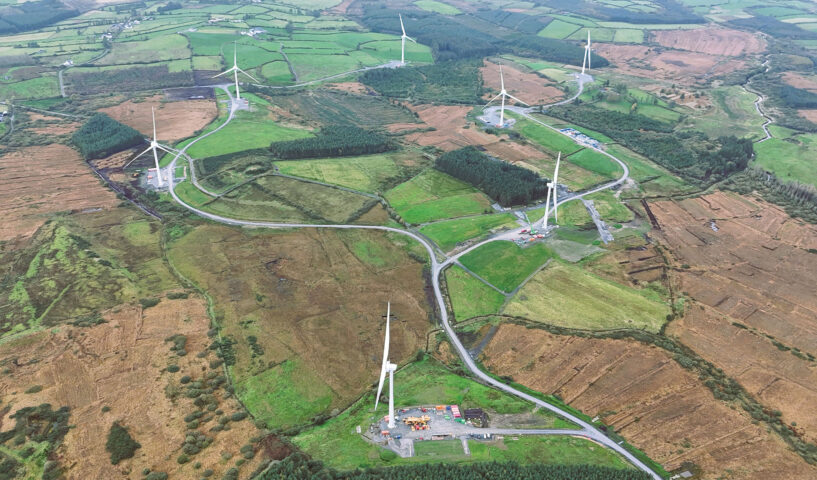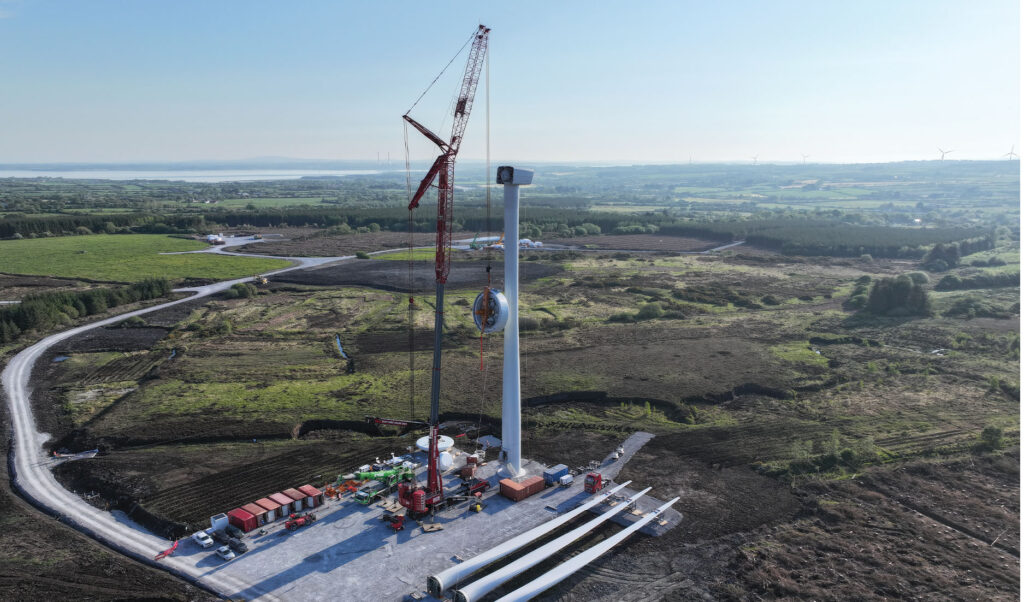
Renewable Heat Obligation Bill set to be introduced
13th October 2025
District heating bill approved
13th October 2025Powering change: Ireland’s clean energy future

Energia Group’s new Crossmore Wind Farm in County Clare.
If you are looking for signs of how Ireland’s journey to net zero is progressing, there are certainly positive indications from 2025 so far.
Onshore wind and solar generation have set new records for generation in the year and according to the Climate Change Advisory Council’s 2025 annual review for the electricity sector, emissions have reached their lowest level since record-keeping began in 1990.
However, the year has also highlighted challenges in terms of the grid resilience to extreme weather events and the overall pace of progress towards Ireland’s 2030 targets for renewable energy. The impact of the storms earlier in the year also helps to reframe the importance of electricity to the basic functioning of our economy and society, and it is through this lens that we should be viewing Ireland’s energy transition; a transition to a modern, sustainable model of growth and prosperity.
In terms of recent policy developments, it has been encouraging to see progress on some of the age-old issues affecting our energy transition. The commencement of important sections of the Planning and Development Act 2024, as well the commitment by Government to provide €3.5 billion to fund network investment has been key. The establishment of an infrastructure unit within the Department of Public Expenditure, as well as the Accelerating Infrastructure Task Force, reflects the urgency with which the State, its agencies and industry have to act. These measures are certainly welcomed by industry, as are further initiatives to involve industry in government taskforces focussed on realising Ireland’s ambitious targets.
An important area that requires urgent consideration if Ireland is to accelerate progress towards the 80 per cent renewable electricity target by 2030 is a demand strategy. One of the main reasons for the electricity sectors lowest recorded level of emissions referenced above, was our reliance on imported electricity from Great Britain. This reliance is coming to the detriment of renewable electricity projects across Ireland, as these are turned down to accommodate the imports.
While the current interconnectors do provide a security of supply benefit to Ireland, we have the opportunity to increase our energy independence for the long term through increased investment in renewables, including offshore wind, the case for which will be undermined if interconnector capacity grows significantly from the levels seen today. The role of a demand strategy would be to create the necessary conditions for the achievement of the renewable electricity targets, while utilising the renewable electricity on the island to export high-value products, as opposed to the electrons. Such an outcome ensures Ireland maximises the opportunities afforded by the energy transition.
As a leading integrated energy company operating across the island of Ireland, we have a keen interest in the realisation of Ireland’s energy transition. Our businesses are integral to not just the achievement of government targets, but also to the realisation of a new model of growth that is increasingly dependent on secure, clean and affordable electricity.
Our investment plans over the coming decade include the development of over 2.4GW of new renewable energy projects, which will be capable of supplying green electricity to more than 1 million homes. The growth in solar in Ireland is an obvious focus for the Group. We are currently developing four large-scale solar projects with a consented capacity of over 600MW in Meath and Dublin and a further 635MW in early-stage development. The first of these projects is expected to start construction in Q2 next year. We are also preparing for the upcoming offshore wind, Tonn Nua auction, which is expected to take place in November.
Following the successful delivery and commercial operation of our onshore 49MW Drumlins Park Wind Farm, in County Monaghan, in August 2024, Crossmore Wind Farm (25MW) in County Clare has become our 17th operational wind farm on the island of Ireland. The project represents an investment of almost €50 million and it is underpinned by a Corporate Power Purchase Agreement with Microsoft.
In parallel with the construction of Crossmore Wind Farm, our Renewables team also completed a second wind farm in 2025. Our Ballylongford Wind Farm in County Kerry is a six-turbine, 25MW wind farm that is expected to enter into commercial operation in early-2026. This project is also underpinned by a Corporate Power Purchase Agreement with Microsoft, as part of a wider agreement between our two companies.
Recognising the broader role of the energy transition to transforming the lives of people on the island, we are proud of our community focused engagement and programmes in the areas where we develop, construct and operate our wind farms. To date, we have invested over €5 million in local communities and we are currently in the process of setting up a new community benefit fund for Drumlins Park Wind Farm in County Monaghan.
This will be our largest fund and the first round of funding allocations will take place later this year. Community Benefit Funds for our Crossmore and Ballylongford wind farms will be set up in the coming months, with the first round of grants to one year after the start of commercial operation.
There are reasons to be optimistic about Ireland’s energy transition, particularly if seen as a force for change that can be transformative for our economy and society. At Energia Group it is our mission to power Ireland’s energy transition and to contribute to a model of sustainable growth harnessing our natural resources.


